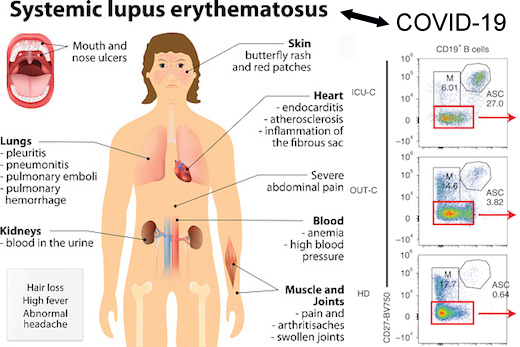A new risk-stratification tool which can accurately predict the likelihood of deterioration in adults hospitalised with COVID-19 has been developed by researchers from the UK Coronavirus Clinical Characterisation Consortium (known as ISARIC4C).
Researchers say the online tool, made freely available to NHS doctors from today, could support clinicians’ decision making—helping to improve patient outcomes and ultimately save lives.
The tool assesses 11 measurements routinely collected from patients, including age, gender, and physical measurements (such as oxygen levels) along with some standard laboratory tests and calculates a percentage risk of deterioration, known as the ‘4C Deterioration Score’.
This innovation, published in The Lancet Respiratory Medicine, builds on the Consortium’s previous work developing the ‘4C Mortality Score’ to predict the percentage risk of death from COVID-19 after admission to hospital. The ‘4C Mortality Score’ is already recommended for use by NHS England to guide anti-viral treatments (Remdesivir).
Doctors will now see both the ‘4C Deterioration Score’ and the ‘4C Mortality Score’ at the same time, using the same tool.
Co-senior and corresponding author, Professor Mahdad Noursadeghi (UCL Infection & Immunity), said: “Accurate risk-stratification at the point of admission to hospital will give doctors greater confidence about clinical decisions and planning ahead for the needs of individual patients.
“The addition of the new 4C Deterioration Score alongside the 4C Mortality Score will provide clinicians with an evidence-based measure to identify those who will need increased hospital support during their admission, even if they have a low risk of death.”
The tool was developed using data from 74,944 individuals with COVID-19 admitted to 260 hospitals across England, Scotland and Wales, between February 6 and August 26, 2020.
Using a multivariable logistic regression model (where several measures are used to predict an outcome), researchers tested the 11 measures (age/gender/physical measures/lab tests) against the large patient cohort, to establish how, and to what to degree each of the measures affected the likelihood of deterioration.
Furthermore, researchers assessed how well the tool performed in nine NHS regions and found that it performed similarly well in each, suggesting that it is likely to be useful across the NHS. Importantly, the new risk score showed superior performance across the NHS, in comparison to previous risk scores.
First author Dr. Rishi Gupta (UCL Institute of Global Health) said: “The scale and wide geographical coverage of the ISARIC4C study across the country was critical to the development of this prediction tool. Our analysis provides very encouraging evidence that the 4C Deterioration tool is likely to be useful for clinicians across England, Scotland and Wales to support clinical decision-making.”
The tool can potentially be incorporated into NHS Trusts’ Electronic Health Record System—used to manage all patient care—so that risk scores are automatically generated for patients.
Researchers suggest that the tool could also be used in other countries for risk-stratification, but should first be evaluated to test its accuracy in these settings.
Follow the latest news on the coronavirus (COVID-19) outbreak
More information:
Rishi K Gupta, Peter Openshaw, J Kenneth Baillie, Malcolm Semple, Mahdad Noursadeghi, on behalf of the ISARIC4C Investigators, ‘Development and validation of the ISARIC 4C Deterioration model for adults hospitalised with COVID-19: a prospective cohort study’ Lancet Respiratory Medicine, DOI: 10.1016/S2213-2600(20)30559-2
ISARIC4C website: isaric4c.net/
Provided by
University College London
Citation:
COVID-19: Online tool identifies patients at highest risk of deterioration (2021, January 8)
retrieved 8 January 2021
from https://medicalxpress.com/news/2021-01-covid-online-tool-patients-highest.html
This document is subject to copyright. Apart from any fair dealing for the purpose of private study or research, no
part may be reproduced without the written permission. The content is provided for information purposes only.
